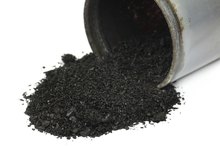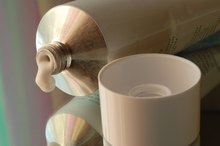Medical Uses for Potassium Permanganate
Potassium permanganate, nicknamed Condy’s crystals, is a chemical which, when diluted, can help treat a number of different skin conditions 4.**
“It’s [known for] its potent oxidizing capacity which translates into it being a great disinfectant,” says Sarina B. Elmariah, MD, PhD, assistant dermatologist at Massachusetts General Hospital and assistant professor at Harvard Medical School, both in Boston 1.**
Although not commonly used, potassium permanganate has been around since the early to mid-1800s, she adds 4.**
Potassium permanganate also acts as an astringent (something that dries out your skin) and can kill bacteria and fungi, making it effective against a number of different skin conditions including infections, eczema, blistering conditions, recurrent boils, foot ulcers, wounds, even gangrene and acne, according to Dr. Elmariah, who is also a member of the American Academy of Dermatology (AAD) 45.**
Available in drug stores, it is sometimes used as an alternative to prescriptions, says Jeffrey Weinberg, MD, AAD member and associate clinical professor of dermatology at Mount Sinai School of Medicine in New York City 2.
Here are some of the more common medical uses for potassium permanganate 45:
To treat skin infections
Potassium permanganate’s is an antimicrobial agent, meaning it can kill germs, namely, bacteria and fungi, says Dr. Elmariah 4.** That means it can treat nail fungus as well as tinea pedis (Athlete’s foot), which is also caused by fungi, as well as bacterial staphylococcus infections that can colonize eczema.
“Chemically, [potassium permanganate] chews things up and in so doing kills bacteria,” explains Richard Sachleben, PhD, a member of the American Chemical Society.
To clean wounds
What Are the Dangers of Potassium Permanganate?
Learn More
As a disinfectant, potassium permanganate can be enlisted to clean and treat wounds 4.** “It’s probably a little stronger than hydrogen peroxide, depending on the conditions you’re using it for,” says Sachleben.
This would include weeping ulcers or abscesses, according to DermNet New Zealand Trust 4. The British Academy of Dermatology recommends diluting the potassium permanganate with warm water 45. Once the chemical is dissolved completely, it should be light pink in color. (Once the color goes away, the chemical is no longer effective, says Dr. Sachleben). You can either soak the affected area right in the tub or wet some gauze or cotton with the solution then apply it to the affected area for about 15 minutes. Then you should continue with any other treatments your doctor has recommended.
A small study in Biomedical Reports found that potassium permanganate, when added to standard treatment, can decrease diabetic foot ulcers, a potentially severe condition that can lead to amputation 4.**
Diluted solutions of potassium permanganate are sometimes used to remove pathogens from foods, as water-treatment additives and to decontaminate respirators, masks, anesthesia and other medical equipment, says Dr. Elmaria 4h
- As a disinfectant, potassium permanganate can be enlisted to clean and treat wounds 4.
- “ A small study in Biomedical Reports.
- Diluted solutions of potassium permanganate are sometimes used to remove pathogens from foods, as water-treatment additives and to decontaminate respirators, masks, anesthesia and other medical equipment, says Dr. Elmaria 4h
To ease eczema
A similar regimen of wet compresses (or two baths a day) can speed healing of blisters which can appear on the hands and feet of people with eczema, says the Merck Manual. That’s along with other treatments such as topical steroids or antibiotics.
Bear in mind that potassium permanganate can stain your skin, nails and bathtub brown, says Dr. Weinberg 4.** The stains on your skin should fade after a day or two (and can be prevented by applying petroleum jelly), but the bathtub may be hard to clean. Best to use a smaller basin.
- A similar regimen of wet compresses (or two baths a day) can speed healing of blisters which can appear on the hands and feet of people with eczema, says the Merck Manual.
- That’s along with other treatments such as topical steroids or antibiotics.
To counter hair-dye allergies
Borax Treatment for Scabies
Learn More
Potassium permanganate can also be used to treat skin irritations that arise from allergies to hair dyes, specifically paraphenylenediamine (PPD), according to DermNet New Zealand Trust 4. PPD is also used in dark henna temporary tattoos, says an article in the Journal of Asthma and Allergy. If you have this type of reaction, DermNet recommends flushing out the dye by washing your hair and scalp with a mild soap or soapless shampoo, then applying 2% hydrogen peroxide solution or compresses soaked in a diluted potassium permanganate solution 45.
What you need to know
Potassium permanganate can be harmful if it’s not used properly, says Dr. Elmariah 45. It should always be diluted thoroughly with water and never ingested.**
Related Articles
References
- Sarina B. Elmariah, MD, PhD, assistant dermatologist, Massachusetts General Hospital and assistant professor, Harvard Medical School, Boston.
- Jeffrey M. Weinberg, MD, associate clinical professor of dermatology, Mount Sinai School of Medicine, New York City.
- Richard Sachleben, PhD, member, American Chemical Society.
- DermNet New Zealand Trust: “Potassium permanganate.”
- British Academy of Dermatology: “Potassium permanganate solution soaks.”
- Biomedical Reports: “Topical 5% potassium permanganate solution accelerates the healing process in chronic diabetic foot ulcers.”
- Merck Manual: “Pompholyx (Dyshidrotic Eczema).”
- Journal of Allergy and Asthma: “Para-phenylenediamine allergy: current perspectives on diagnosis and management.”
Writer Bio
Robin Wasserman has been writing and prosecuting biochemical patents since 1998. She has served as a biochemical patent agent and a research scientist for a gene-therapy company. Wasserman earned her Doctor of Philosophy in biochemistry and molecular biology, graduating from Harvard University in 1995.








